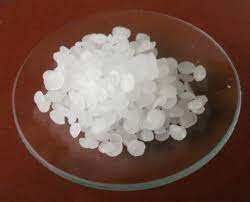Title: Paraffin: The Key to Versatility
**I. Introduction: Unveiling the Essential Substance**
Paraffin, a versatile substance derived from petroleum, stands as a key player in various industries, offering a range of applications that contribute to our daily lives. This exploration delves into the fundamental aspects of paraffin, highlighting its key properties and diverse roles.
**II. Origins and Composition: Petrochemical Roots**
– **Derived from Petroleum:** Paraffin originates from the refining of petroleum, undergoing processes to yield a waxy, colorless or white substance.
– **Saturated Hydrocarbons:** The composition primarily consists of saturated hydrocarbons, providing stability and versatility.
**III. Physical Properties: Characteristics that Define Paraffin**
– **Low Reactivity:** Paraffin’s low reactivity makes it a favorable choice across industries, ensuring stability in various applications.
– **Odorless and Non-Toxic:** With an odorless and non-toxic nature, paraffin meets safety and health standards in diverse uses.
**IV. Industrial Applications: A Workhorse in Various Sectors**
– **Candle Making:** Paraffin is a cornerstone in the production of candles, offering clean-burning properties and shaping the ambiance in homes and commercial spaces.
– **Cosmetics and Pharmaceuticals:** Its role extends to skincare and pharmaceuticals, serving as an emollient and base for ointments, creams, and medicinal applications.
– **Food Industry:** Paraffin contributes to food packaging, providing a protective coating to maintain freshness, and plays a role in food processing applications.
**V. Versatility in Commercial Uses: Beyond the Basics**
– **Electrical Insulation:** Paraffin serves as an insulator in electrical equipment, showcasing its versatility in technical applications.
– **Coatings for Paper and Textiles:** Its use extends to coatings for paper and textiles, offering protective and enhancing properties.
– **Polishes, Lubricants, and Crayons:** Paraffin plays a crucial role in various products such as polishes, lubricants, and crayons, showcasing its adaptability in commercial applications.
**VI. Environmental Considerations: Balancing Utility with Impact**
– **Biodegradability Concerns:** Discussions around paraffin’s environmental impact include considerations of its biodegradability, raising awareness of potential ecological consequences.
– **Non-Renewable Origin:** Sourced from petroleum, paraffin raises concerns about reliance on non-renewable fossil fuels, prompting exploration of sustainable alternatives.
**VII. Ongoing Research and Innovations: Shaping the Future of Paraffin**
– **Alternative Sources:** Ongoing research explores alternative and sustainable sources for paraffin, aiming to address environmental concerns and reduce dependence on non-renewable resources.
– **Eco-Friendly Derivatives:** Innovations focus on developing eco-friendly derivatives of paraffin while preserving its versatile properties, showcasing a commitment to environmental consciousness.
**VIII. Conclusion: Balancing Utility and Responsibility**
Paraffin, with its origins in petroleum, continues to be a fundamental substance with far-reaching applications. While its versatility has contributed significantly to various industries, discussions about its environmental impact persist. Ongoing research and innovations strive to strike a balance between the utility of paraffin and the responsibility to minimize its ecological footprint, ensuring its enduring role in diverse applications.


